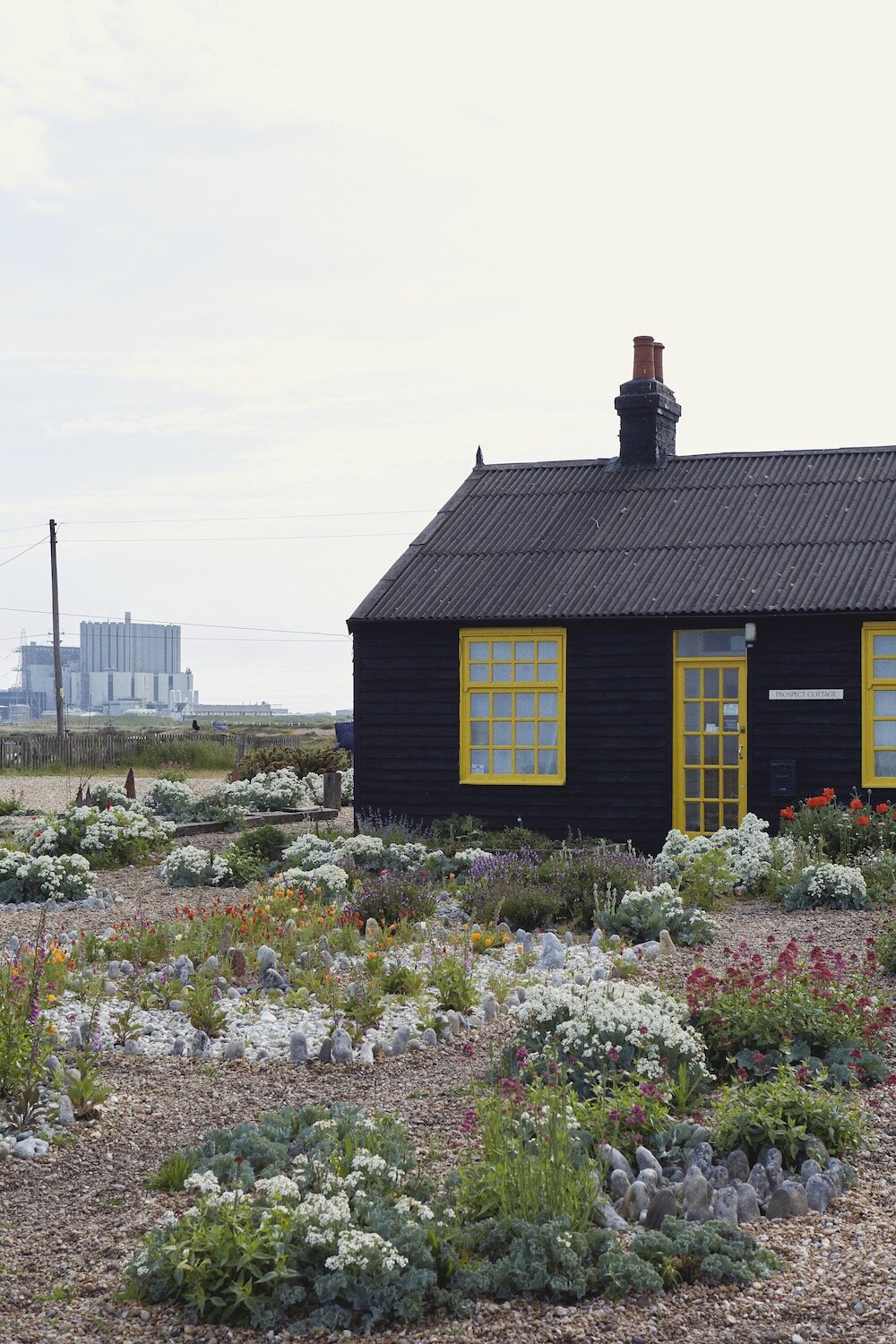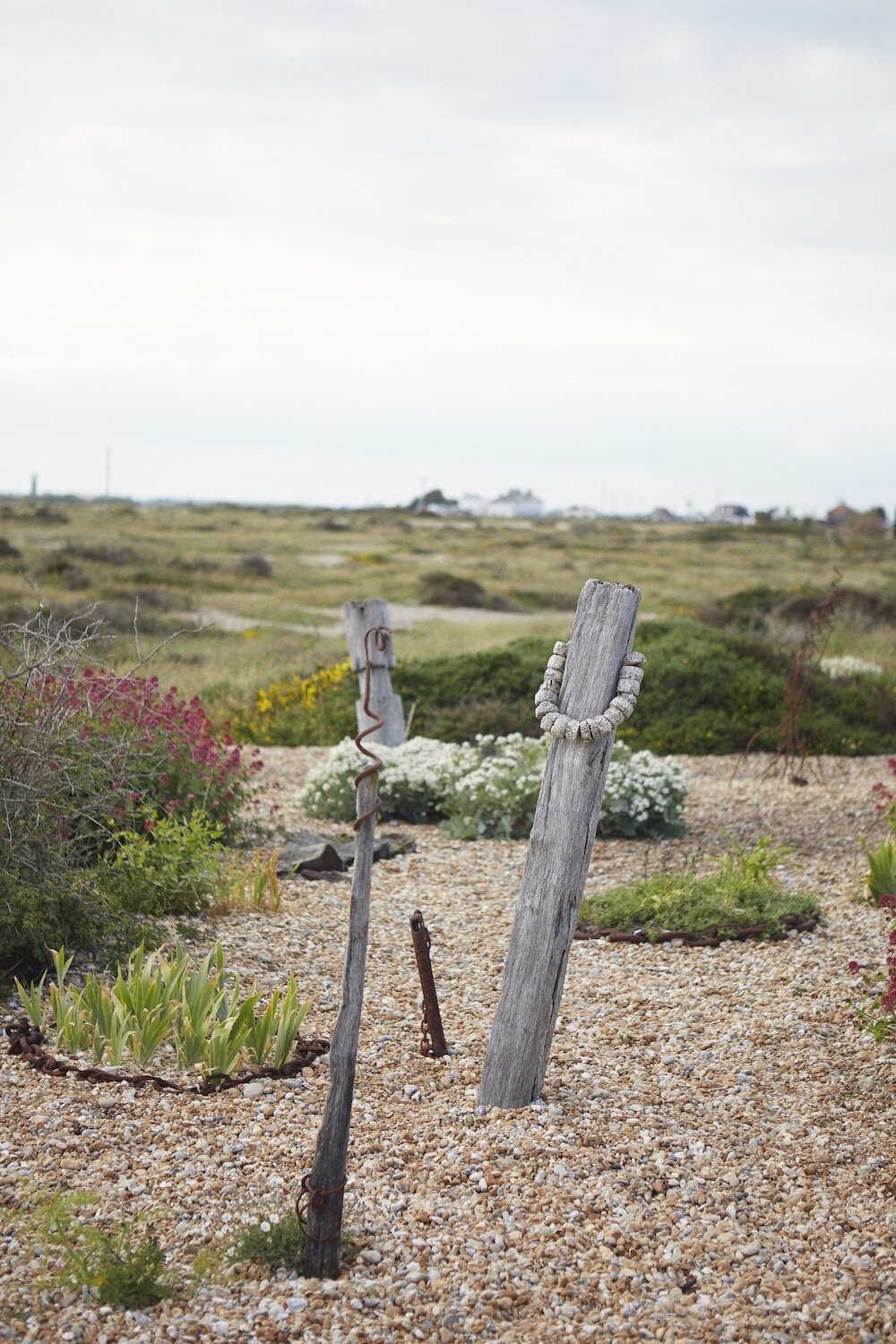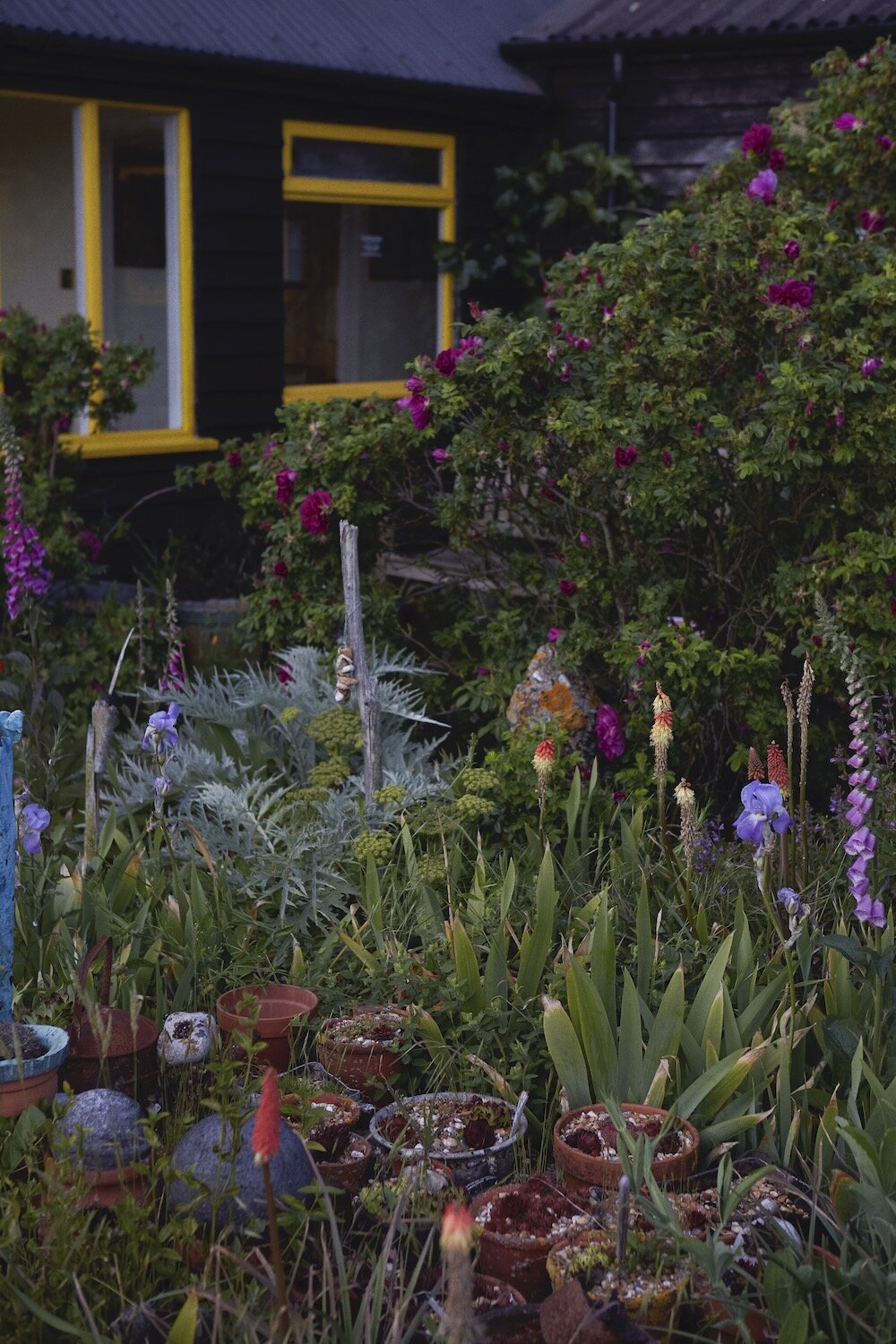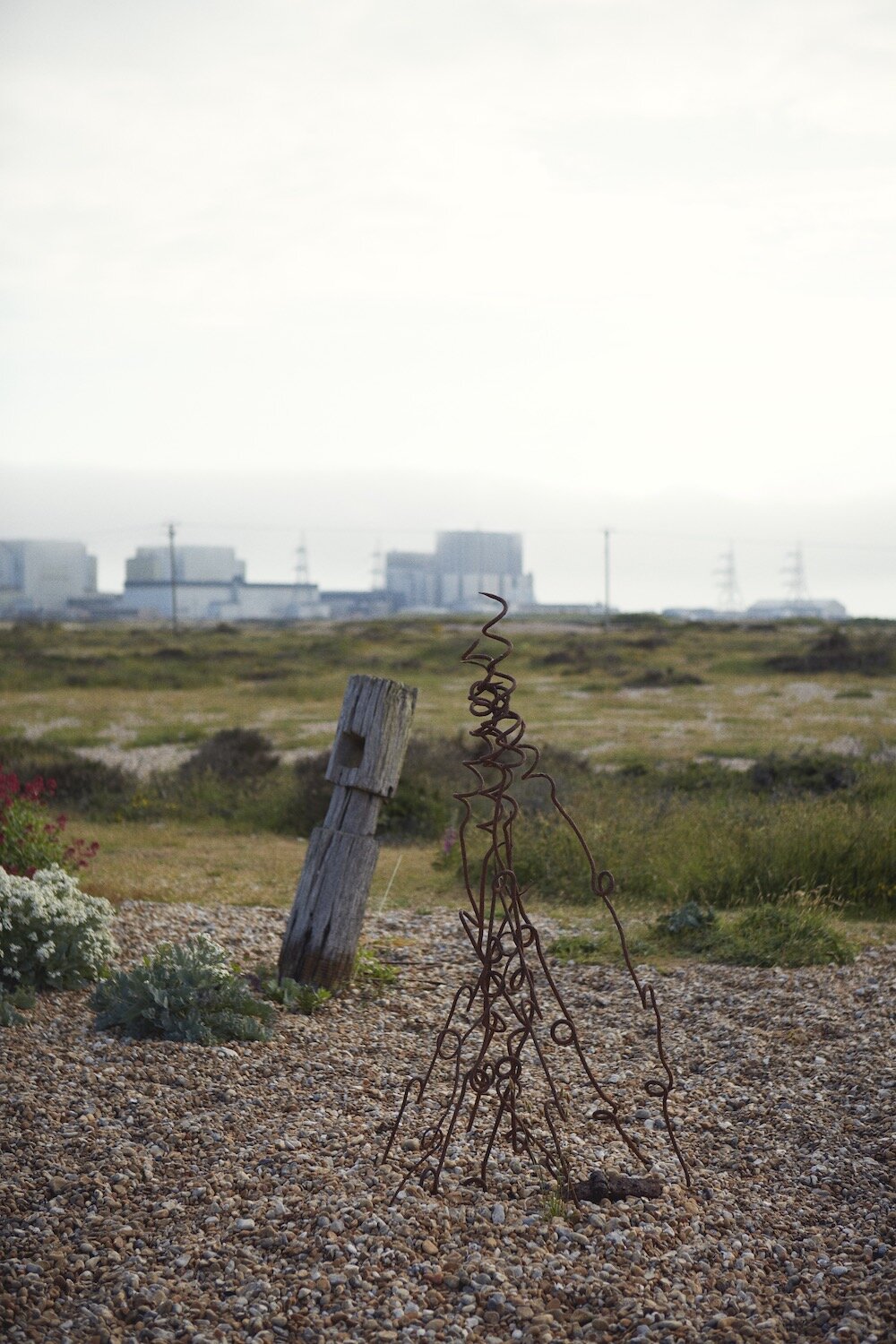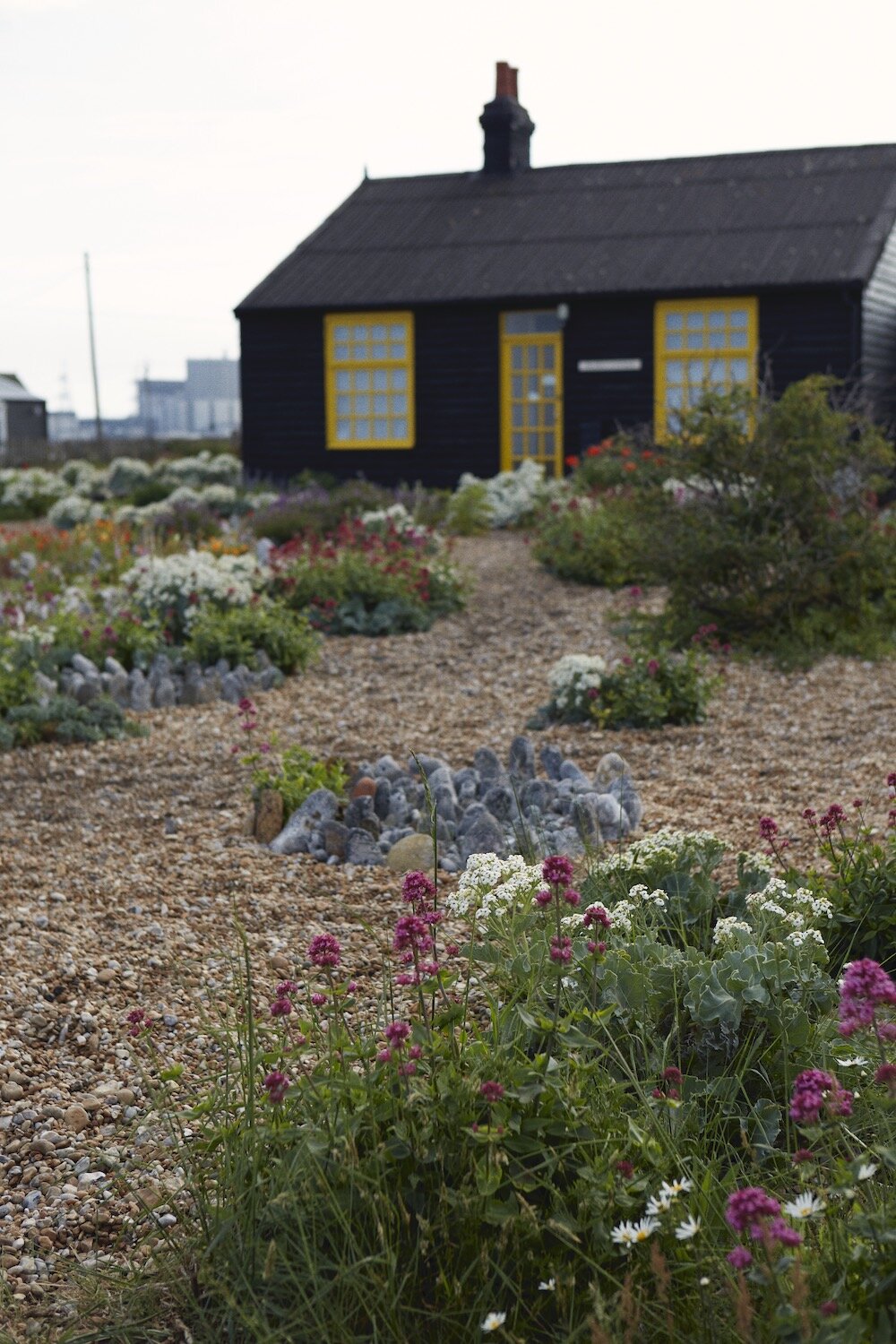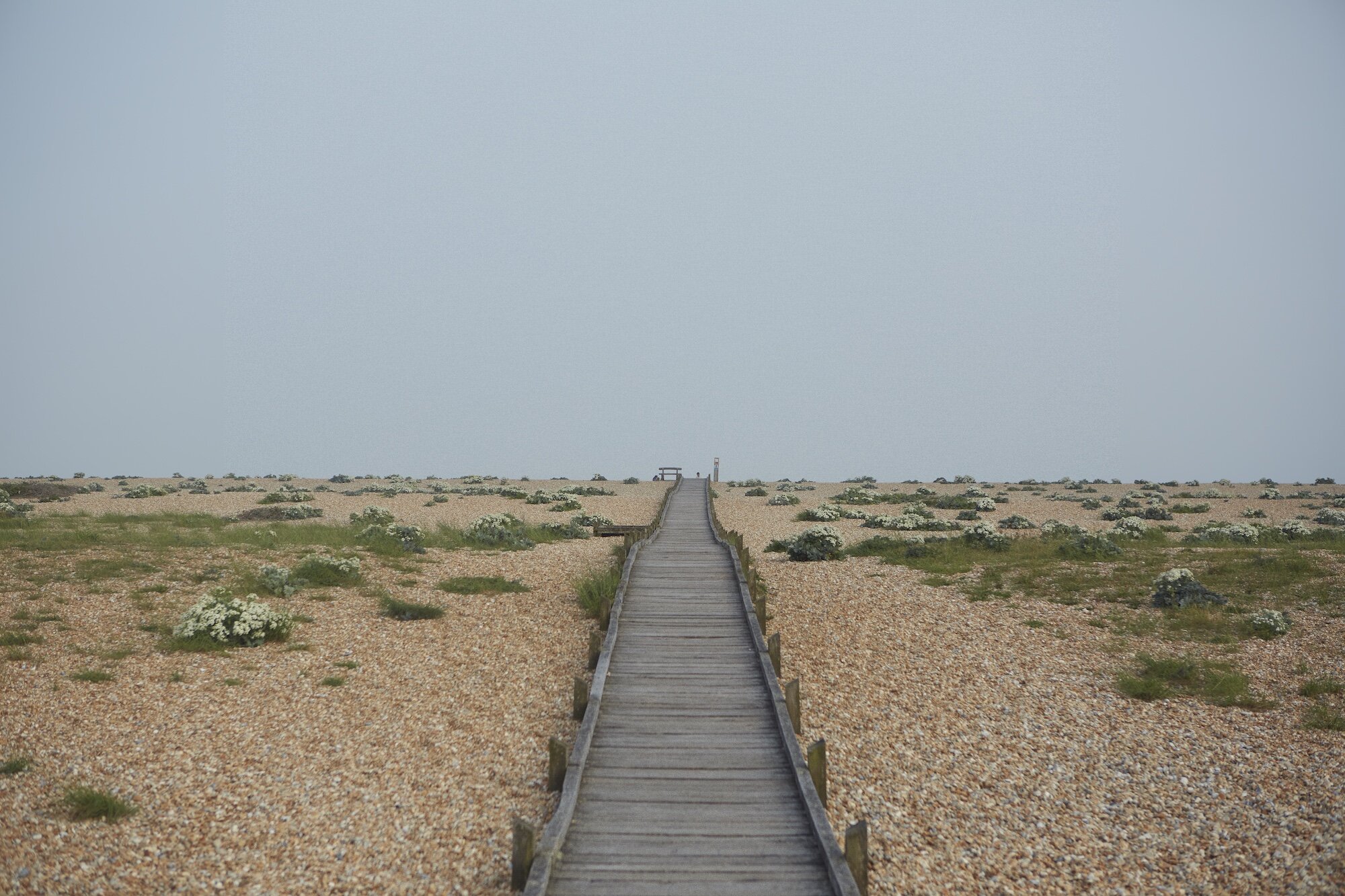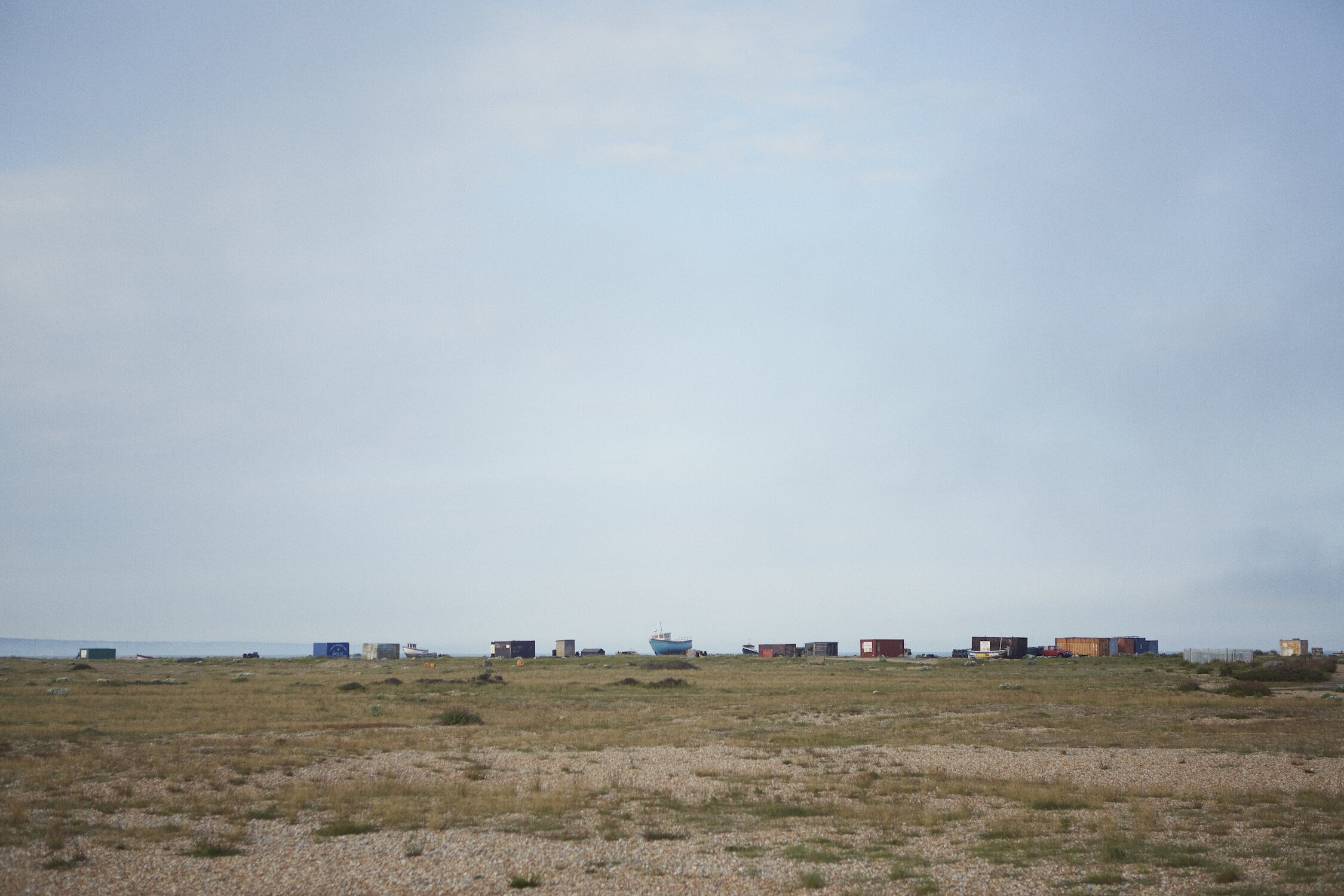Field Notes: Prospect Cottage
As we revisit our Field Notes series of outdoor art explorations, we share our recent trip to Prospect Cottage in Dungeness – the former home of British filmmaker Derek Jarman.
“But the wind does not stop for my thoughts. It whips across the flooded gravel pits drumming up waves on their waters that glint hard and metallic in the night, over the shingle, rustling the dead gorse and skeletal bugloss, running in rivulets through the parched grass - while I sit here in the dark holding a candle that throws my divided shadow across the room and gathers my thoughts to the flame-like moths.”
“I have not moved for many hours. Years, a lifetime, eddy past: one, two, three: into the early hours, the clock chimes. The wind is singing now.”
“Britain’s only desert”, otherwise known as Dungeness is a shingle-covered headland located on the southernmost point of Kent.
Vast and desolate, the stony landscape is interrupted by sporadic signs of life including a lighthouse and a series of small cottages, all set against the backdrop of a looming power station.
The coastal hamlet is home to 29 compact properties including Prospect Cottage, the fisherman’s hut where filmmaker Derek Jarman lived until his death in 1994.
The openly queer artist, writer, documentary maker, activist and poet moved to Dungeness in 1986 after discovering he was diagnosed with HIV. He transformed the cottage’s surrounding garden with a multitude of plants and handmade sculptures, often created from driftwood and scrap metal found during his daily beach walks.
“Paradise haunts gardens, and some gardens are paradises. Mine is one of them.”
Although the interiors of Jarman’s former home are kept private, the gardens are open for visitors to wander through and observe. A disused fishing boat sits in front of the property, adjacent to the home’s encompassing flowers and shrubbery. Planted in straight and circle formations, offerings of Sea Kale, Marigolds and Californian Poppies are found bordered by hammered metal and sculpted wood.
Although a seemingly sunny day, during our visit to Dungeness a heavy fog descended – completely engulfing the flat landscape in front of us. It felt very fitting to its stark setting and almost post-apocalyptic to look out and see the grey waves without a horizon and the coastal huts cloaked in thick mist.
It’s interesting to ponder why Jarman decided to spend his later years in this sleepy fishing hamlet. Tucked away from the chaos of normality, I imagine the simplicity and lack of distraction naturally provided both him and its current residents with a peaceful place to rest.
Read more of our Field Notes series on our Journal.

